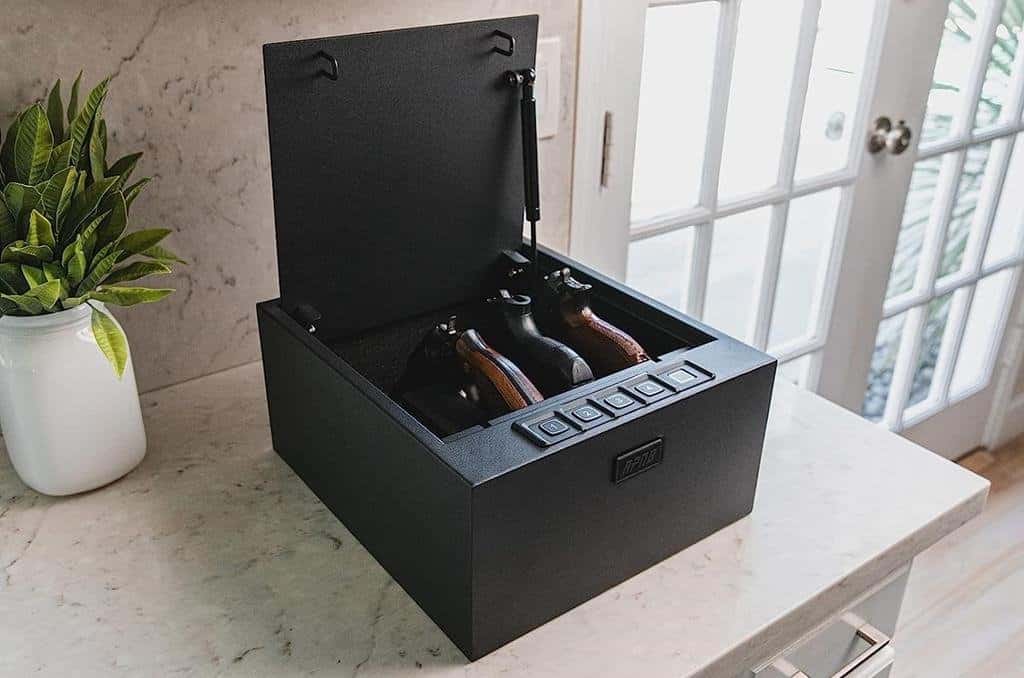Installing a gun safe can be a critical decision for firearm owners who value safety and security. One common question that arises is whether a gun safe can be safely placed upstairs in a residential setting. In this article, we will explore the factors to consider when moving a gun safe upstairs and offer guidance on safe installation practices.
The Weight of a Gun Safe
The primary concern when moving a gun safe upstairs is its weight. Gun safes can vary significantly in size and weight, with some larger models weighing well over a thousand pounds. The sheer bulk and mass of a gun safe can make moving it up or down stairs a challenging and potentially hazardous endeavor.
Factors to Consider
1. Structural Integrity:
Before attempting to move a gun safe upstairs, it’s crucial to assess the structural integrity of your home. Check the load-bearing capacity of the staircase and the floor where the safe will be placed. Consult with a structural engineer or a professional contractor if you have any doubts about the ability of your home to support the safe’s weight.
2. Safe Weight and Dimensions:
Determine the weight and dimensions of your gun safe. Smaller and lighter safes may be more manageable to move upstairs, while larger and heavier models may require specialized equipment and professional assistance.
3. Staircase Design:
Examine the design of your staircase. Straight and wide staircases are generally more suitable for moving heavy objects like gun safes. Narrow or curved staircases can pose significant challenges.
4. Professional Movers:
Consider hiring professional movers or safe installation specialists who have experience moving heavy safes upstairs. They will have the necessary equipment and expertise to safely navigate the process.
5. Equipment:
If you decide to move the safe yourself, you may need equipment such as a heavy-duty dolly, straps, and moving blankets. Ensure that you have the right tools and safety gear for the job.
6. Weight Distribution:
When moving the safe upstairs, ensure that the weight is evenly distributed on the dolly or lifting equipment. Uneven weight distribution can lead to instability and accidents.
7. Securing the Safe:
Once the safe is in its designated location upstairs, make sure it is securely anchored to prevent tipping or shifting.
Safe Installation Practices
When moving a gun safe upstairs, follow these safe installation practices:
- Safety First: Prioritize safety at all times. Use proper lifting techniques, safety gear, and take breaks if needed to prevent injury.
- Plan Ahead: Carefully plan the moving process, including the path you’ll take up the stairs and the tools and equipment you’ll need.
- Secure the Path: Remove any obstacles or tripping hazards from the path and ensure that the stairs are clean and dry.
- Use Proper Equipment: Invest in high-quality moving equipment and follow the manufacturer’s instructions for safe operation.
- Seek Professional Help: If you have any doubts about moving the safe yourself, consider hiring professionals with experience in moving heavy objects upstairs.
- Professional Installation: For larger and heavier safes, it’s often advisable to have them professionally installed to ensure proper anchoring and safe placement.
- Consult an Expert: If you are unsure about the structural integrity of your home or have concerns about moving a heavy safe upstairs, consult with a structural engineer or contractor.
In conclusion, moving a gun safe upstairs is possible, but it should be approached with caution and careful planning. The key considerations are the safe’s weight, the structural integrity of your home, and your ability to safely execute the move. Whether you choose to move the safe yourself or seek professional assistance, safety should always be the top priority to protect both you and your valuable firearms.



